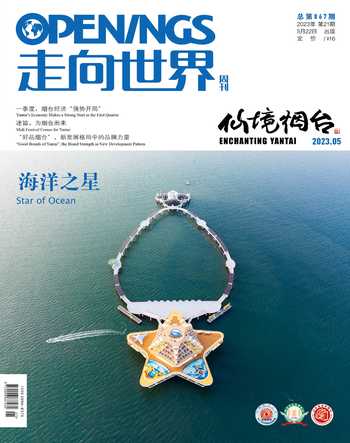烟台那些小海味儿
王红婷
住在海邊的烟台人是幸福的。
每当春阳含羞、桃花初绽,烟台第一批小海味像海虹、海肠子、沙肠子、爬虾、桃花虾,就赶着趟儿爬上餐桌了。如果说螃蟹、对虾是一桌海鲜盛宴的话,那么这些小家碧玉似的海鲜只能算得上锅台灶脚的配菜了。
可恰恰是这犄角旮旯的小海味儿,吃起来更具风味,更贴地气儿。
老烟台特有的海鲜是海肠,通常的吃法像蒜蓉海肠、肉末海肠,咸脆而极香滑。活的海肠、嘎嘣虾(鼓虾)、巴蛸(章鱼)都可蘸辣根生吃,撬好的牡蛎通常拌着柠檬汁生吃,三杯两盏,家人同聚。

烟台人是最会吃的啊!飞蛤、小螃蟹、扇贝、蛏子、螺类等平价海鲜,上火隔水煮个七八分钟就开口笑了,拌上黄瓜或是蘸上老烟台酱油就能吃,不必复杂地加工,也能柔软丰满,入口着舌,满口原汁原味儿。这不像有些菜系里,一人一个扇贝,壳里面还要装粉丝、木耳等其他配料,窃以为失了本真。反正在烟台扇贝很便宜,想吃几个就吃几个,像吃花生米一般随心随意。价格略贵的如海参、鲍鱼、大螃蟹,偶尔吃一吃,犹如吃蟠桃般稀罕,吃多了倒也不好的,肠胃脆弱的主儿更要少吃。
在众多海鲜当中我独爱爬虾。爬虾,又叫琵琶虾、虾蛄,老烟台人多叫爬虾,又形象又上口。春天和冬天的爬虾肉多鲜嫩,富含蛋白质,极少的脂肪,肥壮的虾脑部满是膏脂。脊背上能隐隐看到一条由颈至尾的深紫色带,这条色带就是虾籽,煮熟以后呈橘黄色,被包裹于虾肉中央,略带韧劲但醇香无比。肥硕的爬虾一只只簇拥在一起,膏腴嫩滑,鲜香爽口,吃起来真是一根虾腿都不舍得放过,愣是谨小慎微地咂摸得津津有味,唯恐漏掉一口鲜味儿。
夏天却不能吃爬虾,夏天的爬虾精瘦精瘦的,个大腰圆的那种也是腹空如水,壳多肉少。小时候老家山城闭塞,偶尔能吃到些鲅鱼小虾米都开心得如同过年,若是能吃到大爬虾,那真是无比幸福的事儿。爬虾生生不息,年年捕年年生,年年都是爬虾的丰收年,所以爬虾又得一美名曰“富贵虾”。
年年花开花谢,岁岁潮涨潮落,年月里五味杂陈,只有妈妈会煮上一锅带着海腥味儿的小海鲜,等你回家。

People living near the sea in Yantai are happy.
In the early spring when peach blossoms start to bloom, the first batch of small seafood in Yantai, such as mussel, sea intestine, sand intestine, mantis shrimp, and peach blossom shrimp, begin flocking to the table of the locals. If crabs and prawns are considered as the main dishes on a seafood feast, these varieties of small seafood can only be considered as side dishes in the kitchen.
But it is precisely these small seafood dishes in the kitchen corners that taste more delicious and more typical of the local food.
The seafood peculiar to the old Yantai is sea intestine, which is usually cooked in such ways as minced garlic sea intestine or minced meat sea intestine, which are salty, crispy, and extremely fragrant. The living sea intestine, snapping shrimp, and octopus can all be eaten raw with horseradish and the fresh oysters are usually eaten raw with lemon juice.

